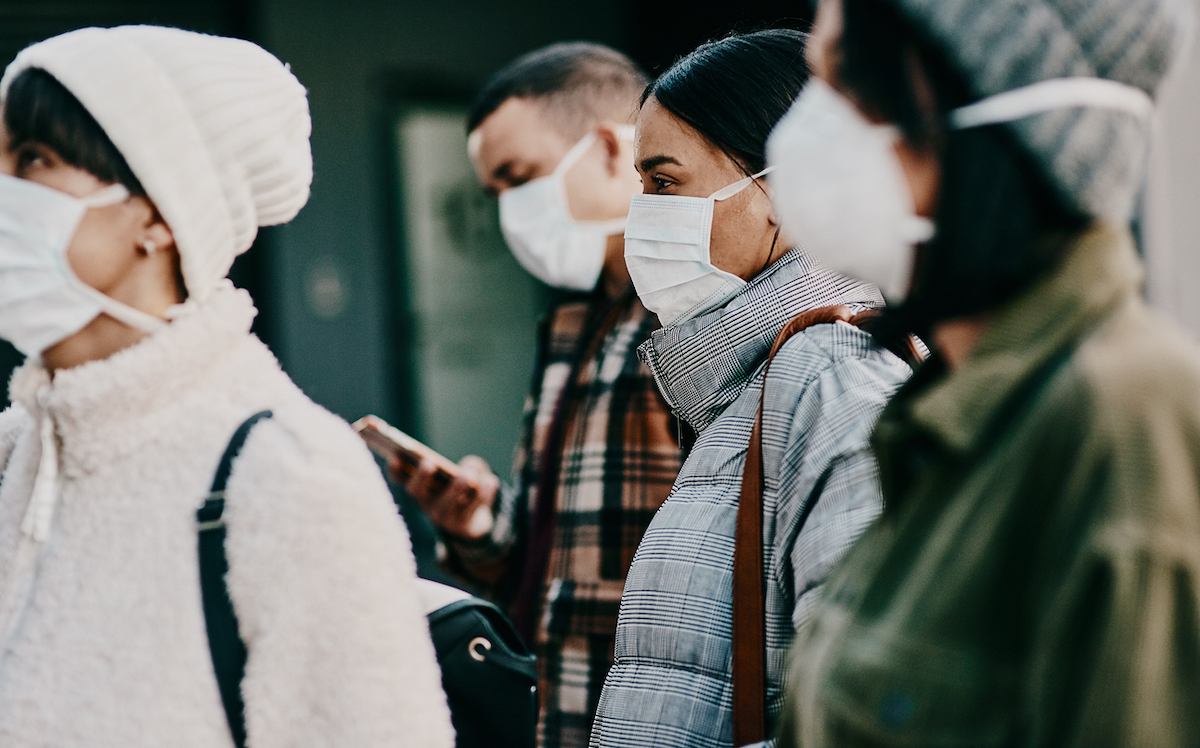The first case of the U.K. COVID variant—officially known as B.1.1.7—was only first reported in the U.S. at the end of December. But Scripps’ preprint study posted on Feb. 7, which has not yet been peer-reviewed, has found that the highly contagious strain is doubling in number every 10 days, confirming estimates originally put forth by the U.S. Centers for Disease Control and Prevention (CDC) that it could become the most common form of the virus by March. “We should probably prepare for this being the predominant lineage in most places in the United States by March,” Kristian Andersen, a co-author of the study and a virologist at Scripps, told The New York Times. And for more regular COVID news sent right to your inbox, sign up for our daily newsletter. Experts explain that the U.K. variant changed the exterior shape of the virus, enabling it to more easily infect healthy cells. “It makes it like even stickier Velcro,” Michael Worobey, PhD, a viral evolution researcher at the University of Arizona, told CNN. Now, experts warn that the heavy surges witnessed in other countries such as Portugal, Ireland, and Jordan were likely caused by the variant, and could likely create similar conditions stateside. “There could indeed be a very serious situation developing in a matter of months or weeks,” Nicholas Davies, an epidemiologist at the London School of Hygiene and Tropical Medicine, told The Times. And for more on the states in the worst positions, check out The 2 States That Are “At Risk of Being Overrun” by the New Strain. Some experts argue that focusing on vaccinating as much of the public as possible—especially those above the age of 65 who are at higher risk of severe COVID—has now taken on new importance. “Now, we’re in a race. We’re in a race to see how quickly we can vaccinate the American people,” Peter Hotez, MD, dean of the National School of Tropical Medicine at Baylor College of Medicine, told CNN recently. “I’ve been on Zoom calls for the last two weeks about how we’re going to manage this,” Hotez said. “The big wall is about to hit us again and these are the new variants. … This could be really, very dire for our country as we head into the spring.” And for more warnings on your vaccination, find out why Dr. Fauci Says Don’t Do This After Your First COVID Shot. Just over a week ago, on Jan. 31, White House COVID adviser Michael Osterholm, MD, told Meet the Press on Jan. 31 that “the surge that is likely to occur with this new variant from England is going to happen in the next six to 14 weeks.” Now, we’re even closer to that and Osterholm warned, “We are going to see something like we have not seen yet in this country.“ae0fcc31ae342fd3a1346ebb1f342fcb Osterholm said our current downward trajectory with COVID cases could lead to a false sense of security, much like the eye of a storm. “You and I are sitting on this beach, where it’s 70 degrees, perfectly blue skies, gentle breeze, but I see that hurricane—Category 5 or higher—450 miles offshore,” Osterholm told host Chuck Todd. “Telling people to evacuate on the nice, blue sky day is going to be hard. But I can also tell you that the hurricane is coming.” And for more on how the pandemic is affecting where you live, find out How Bad the COVID Outbreak Is in Your State.



